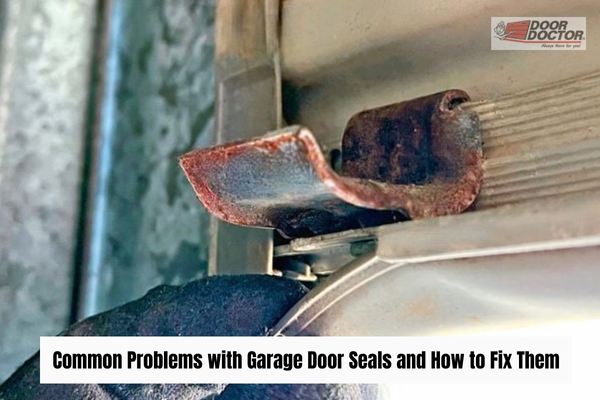
Common Problems with Garage Door Seals and How to Fix Them
Garage door seals play a crucial role in maintaining the comfort and security of your home. They keep out drafts, water, pests, and debris while also helping to insulate your garage. However, these seals can become worn or damaged over time, leading to various problems. In this post, we’ll explore the most common problems with garage door seals and provide practical solutions to fix them.
Most Common Problems with Garage Door Seals (H2)
Worn-Out Seals
Garage door seals are made from rubber or vinyl, which degrade over time due to exposure to harsh weather conditions. Sun, rain, and fluctuating temperatures can cause the seals to crack, shrink, or become brittle.
Gaps in the Seal
Over time, you may notice that gaps develop between the seal and the garage door, especially at the corners. This can lead to drafts, water seepage, and pest infiltration.
Misaligned Door
A misaligned garage door can cause uneven wear on your seals and create gaps where the door doesn’t properly meet the floor or frame. This can occur due to regular use, faulty springs, or the door alignment issues.
Improper Seal Installation
Sometimes, seals may not be installed correctly, leading to poor performance. If the seal wasn’t attached securely or evenly, drafts and debris could enter the garage.
Seal Material Not Suitable for Climate
Choosing the wrong type of seal material for your climate can also cause problems. Some materials may not hold up well in extreme temperatures, leading to premature wear and tear.
How to Fix the Issues with Garage Door Seals?
Replace the Worn-Out Seals
If you notice your seals are worn out, the best solution is to replace them. You can purchase garage door seals at most hardware stores. Measure your existing seal's length and width to ensure you buy the correct size. Installation is typically straightforward—simply remove the old seal and slide the new one into place along the bottom or sides of the door.
Fix the Gaps in the Seal
Gaps in the seal can usually be fixed by adjusting the door itself. Ensure the garage door is properly aligned and that the tracks are level. You can also install additional weatherstripping or foam tape around the edges of the door to close any small gaps.
Fix the Misaligned Door
To correct a misaligned door, check the tracks and hinges to ensure everything is in place. Tighten any loose screws or bolts and ensure the door operates smoothly along the tracks. If the door continues to cause problems, it’s best to call a professional to inspect and adjust the door alignment.
Properly Install the Seal
Inspect the seal for any areas where it may be loose or unevenly applied. Reattach the seal by properly securing it with screws or adhesive where needed. In cases where the seal has stretched or shifted, a replacement may be necessary.
Select a Suitable Material According to the Climate
When selecting a replacement seal, consider the climate in your area. For example, if you live in a region with harsh winters, opt for a seal that is specifically designed to withstand cold temperatures.
Conclusion
Garage door seals are a simple yet vital component of your garage’s efficiency and security. Regular maintenance and timely replacement of worn or damaged seals can prevent bigger issues such as water damage, pest infestations, or energy loss. If you experience persistent problems or need professional assistance, Door Doctor is here to help with expert repair and replacement services tailored to your needs.
Keep your garage sealed tight and secure—contact Door Doctor today for all your garage door needs!





